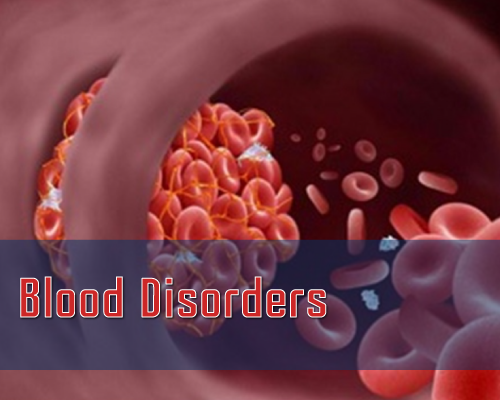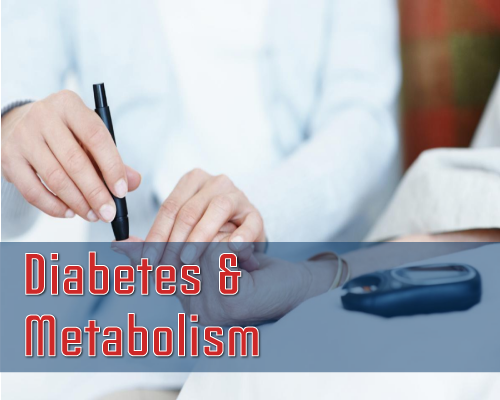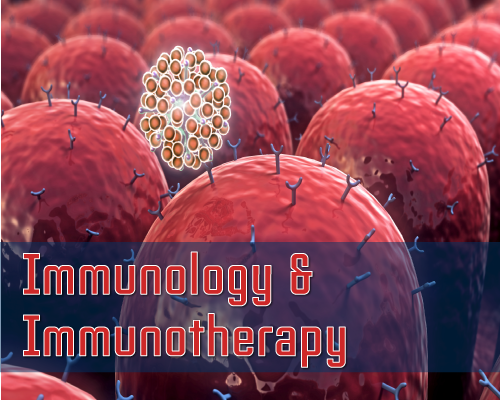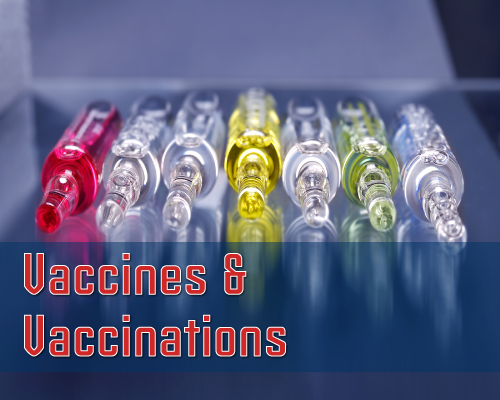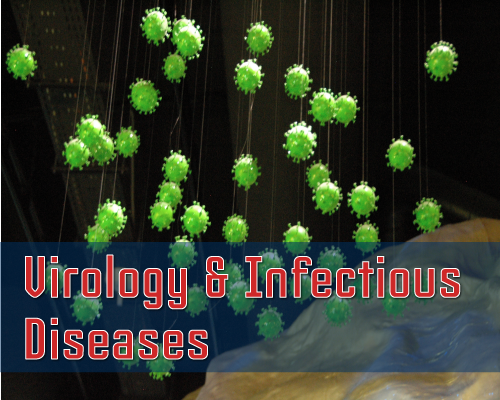Tathiane L. Lenzi1*, Jéssica F. Ribeiro, Tamires V. Forgerini, Rachel de O. Rocha and Fabio Zovico Maxnuck Soares
Tathiane L. Lenzi1*, Jéssica F. Ribeiro2, Tamires V. Forgerini3, Rachel de O. Rocha4 and Fabio Zovico Maxnuck Soares5
1Graduate Program in Dental Science, Federal University of Santa Maria Rua Marechal Floriano Peixoto, 1184, 97015-270, Santa Maria, RS, Brazil
2Undergraduate Course of Dentistry, Federal University of Santa Maria, Brazil
3Undergraduate Course of Dentistry, Federal University of Santa Maria, Santa Maria, RS, Brazil
4Department of Stomatology, Federal University of Santa Maria, Santa Maria, RS, Brazil
5Department of Restorative Dentistry, Federal University of Santa Maria, Santa Maria, RS, Brazil
*Address for Correspondence: Tathiane Larissa Lenzi, Graduate Program in Dental Science, Federal University of Santa Maria, Rua Marechal Floriano Peixoto, 1184, +97015-270, Santa Maria, RS, Brazil, Tel: +55 55 3220 9266; E-mail: tathilenzi@usp.br
Dates: 13 June 2017; Approved: 03 July 2017; Published: 05 July 2017
Citation this article: Lenzi TL, Ribeiro JF, Forgerini TV, de O Rocha R, Maxnuck Soares FZ. Is Chlorhexidine Useful In Adhesive Procedures To Eroded Dentin? Sci J Res Dentistry. 2017;1(1): 017-020.
Copyright: © Lenzi TL, et al. This is an open access article distributed under the Creative Commons Attribution License, which permits unrestricted use, distribution, and reproduction in any medium, provided the original work is properly cited.
Keywords: Chlorhexidine; Dentin-bonding agents; Matrix metalloproteinases; Shear strength; Tooth erosion
Abstract
This in vitro study assessed the effect of 2% Chlorhexidine Digluconate (CHX) on immediate and six-month micro Shear Bond Strength (µSBS) of an etch-and-rinse adhesive to sound and eroded dentin. Forty bovine incisors were polished to obtain flat smooth dentin. Specimens were randomly allocated according to substrate (sound dentin and eroded dentin - 3x/day cola drink for 7 days) and treatment (control and CHX – 2% CHX for 60 s after acid etching). After adhesive (Prime & Bond NT, Dentsply) application, four resin composite restorations (Z250, 3M ESPE) were built up on each dentin surface, using the area delimitation technique. Half of the specimens were evaluated by µSBS test after 24 h of water storage, and the other half was evaluated six-month later. Data (MPa) were analyzed with 3-way repeated measures ANOVA and Tukey’s post-hoc tests (α = 0.05). The µSBS values obtained for eroded dentin were lower than for sound dentin. Six-month of water storage resulted in significant reduction in bond strength for all groups. However, the decrease in µSBS values was lower when dentin surfaces were pre-treated with CHX, regardless of the substrate. In conclusion, the CHX pretreatment is not able to ensure the same effectiveness of the etch-and-rinse adhesive tested to eroded dentin that to sound dentin, but it minimizes the bonds degradation over time.
Introduction
Changes in lifestyle linked to the increasing in beverage and acid foods consumption, even as a more thorough examination overestimating the diagnosis, has been related to increase of the dental erosion prevalence[1].The erosive challenge is able to modify the dental substrates, leading to greater wear[2]and reduction in hardness[3]of the dentin substrate. Collagen exposure, opening of the dentinal tubules and removal of intertubular organic portion have also been reported[4].
These modifications seem jeopardize the bonding longevity to eroded dentin[5], creating sites more prone to undergo hydrolytic[6]and enzymatic degradation[7,8], mediated by collagen-degrading enzymes, as Metalloproteinases (MMPs) and cysteine cathepsins[9].Pooled results from a systematic review[10]has point out that the Chlorhexidine digluconate (CHX) acts as inhibitor of these enzymes, showing a beneficial effect for the bond stability to sound dentin, since it decreases of loss of bond strength after aging.
Furthermore, the effect of CHX may be dependent on the adhesive system used, with the nonsimplified more stable through time than the simplified ones [11]. As the MMP inhibitors act on the exposed collagen, the sequential application of phosphoric acid, CHX, and an etch-and-rinse adhesive may be more effective than the self-etch adhesives [11].
Since the CHX application is promising for the control erosion progression [12], it may expected a higher inhibition of the degradation process in eroded dentin bonded interfaces in comparison with sound dentin. However, the influence of CHX in long-term bonding to eroded dentin has been poorly investigated [13, 14].
Therefore, this in vitro study assessed the effect of 2% Chlorhexidine digluconate (CHX) on immediate and six-month micro shear bond strength (µSBS) of an etch-and-rinse adhesive to sound and eroded dentin.
Materials and Methods
Tooth selection and preparation
Forty bovine incisors stored in 0.5% aqueous chloramine solution at 4ºC were used in this study. The roots were removed using low-speed diamond disc in a cutting machine (Labcut 1010, Extec Co., Enfield, USA) and crowns were partially embedded in self-curing acrylic resin inside polyvinyl chloride rings (JET Clássico®, São Paulo, Brazil). The smooth surfaces were ground with 320-grit SiC paper until flat middle dentin surfaces were obtained. Dentin surfaces were polished with 600-grit SiC paper for 60 s, under running water, to standardize the smear layer.
Erosive challenge
Specimens were randomly allocated into 2 groups: (1) immersion in artificial saliva during the experimental period (control group - sound dentin); (2) exposure to erosion challenge according to a pH-cycling model (eroded dentin).
Three pH-cycles per day at room temperature were performed for seven days [15]. Teeth were immersed in a cola drink (Coca-Cola, [pH: 2.6, phosphate: 5.43 mM Pi, calcium: 0.84 mM Ca2+, fluoride: 0.13 ppm F, titratable acid: 40.0 mmol/L OH- to pH 5.5 and 83.6 mmol/L OH- to pH 7.0], Spal, Porto Real, Brazil) for 5 min (30 mL per tooth), under agitation, and were kept in artificial saliva (1.5 mM Ca(NO3)2 • 4H2O, 0.9 mM NaH2PO2 • 2 H2O, 150 mM KCl, 0.1 M Tris buffer, 0.03 ppm fluoride, pH 7.0) between erosive cycles at room temperature. During the remaining time, teeth were also kept in artificial saliva [15].
Bonding and restorative procedures
Teeth from each dentin substrate (sound or eroded) were randomly reassigned to two subgroups (n=10) depending on the application or not of CHX to the acid-etched dentin.
Prior to bonding procedures, the delimitation of the adhesive area with an acid-resistant double-faced adhesive tape (Tectape, Delfitas; Manaus, AM, Brazil) was performed. An Ainsworth-style rubber-dam punch (Wilcos; Petropolis, RJ, Brazil) was used to perforate the adhesive tape [16].
Dentin surfaces were etched with 34% phosphoric acid gel (Caulk Tooth Conditioner Gel, Denstply, Milford, USA) for 15 s, rinsed with water and dried with air steam. Dentin surfaces were re-hydrated with 1.5 µL of distilled water (Control groups) or 1.5 µL of 2% chlorhexidine digluconate (CHX groups). Solutions were left on the dentin surfaces for 60 s. Excess of solution was removed with absorbent paper and the dentin surfaces were kept moist.
Then, two coats of an acetone solvent-based adhesive (Prime & Bond NT, Denstply, Milford, USA) were applied slightly for 20 s over the adhesive tape and gently air-dried for 10 s. After removal of the upper protective plastic film from the surface of the tape, four polyethylene tubes (Micro-bore® Tygon S-54-HL Medical Tubing, Saint-Gobain Performance Plastics, Akron, USA) per tooth were positioned over the dentin surfaces with the lumen coincident with the perforations, and the adhesive was light-cured for 10 s (Emitter B, Schuster, Santa Maria, RS, Brazil). Tubes were carefully filled up with resin composite (Filtek Z250, 3M ESPE, St Paul, USA; shade A2) and light cured for 20 s. Table 1 presents the main components and pH values of the materials used in the study.
Microshear bond strength test (µSBS)
After 24 h storage in distilled water at 37°C, the polyethylene tubes were removed by cutting it into two hemi-cylinders using a surgical blade, resulting in composite cylinders with a cross-sectional area of approximately 0.45 mm2. Specimens were examined under a stereomicroscope at 20× magnification (Discovery V20, Zeiss, Berlin, Germany), and those with interfacial gaps, bubble inclusion, or other defects were excluded and replaced. Two composite cylinders of each tooth were immediately evaluated by µSBS. The teeth were individually attached to a universal testing machine (Emic, São José dos Pinhais, PR, Brazil). A thin steel wire (0.20mm diameter) was looped flush between the load cell projection and the resin composite cylinder making contact with the lower half- circumference of the cylinder and touching the dentin surface. A shear load was applied at a crosshead speed of 1.0 mm/min, until failure occurred. The other two cylinders were submitted to µSBS after six-month of storage in distilled water at 37°C. The fracture load was recorded and the bond strength was expressed in MPa.
Failure mode
A single observe revaluated the failure mode under stereomicroscope at 40× magnification and classified them as interfacial or cohesive (failure exclusively within the dentin or resin composite).
Statistical analysis
The experimental unit in the current study was the tooth, since half of the specimens was tested immediately and the other half was tested after six-month. Thus, the mean of µSBS (MPa) values of two composite cylinders of each hemi-tooth was averaged for statistical purposes, so the same tooth produced values both for immediate and six-month conditions, in split-plot arrangement. The µSBS mean for every testing group was expressed as the average of the 10 measurements used per group. The µSBS mean for every testing group was expressed as the average of the 10 hemi-teeth used per group. Pre-testing failures were recorded, but they were not included in the analyses.
Normal distribution of bond strength data was assumed after Kolmogorov-Smirnov test. The µSBS means were analyzed with three-way repeated measures ANOVA (substrate vs. treatment vs. storage period) and Tukey post hoc test (α = 0.05). The repeated measure was the storage period. Statistical analysis was performed with GMC software, version 7.7 (FORP USP, Ribeirão Preto, Brazil). The failure mode was evaluated descriptively.
Results
Microshear bond strength means (MPa) and standard deviations for all experimental groups are summarized in (Table 2). Statistical analysis revealed that the main factors, “substrate” (p = 0.000), “storage period” (p = 0.000) as well as the cross-product interaction “treatment vs. storage period” (p = 0.016) were significant. The µSBS values obtained for eroded dentin were lower than for sound dentin. Six-month of water storage resulted in significant reduction in bond strength for all groups. However, the decrease in µSBS values was lower when dentin surfaces were pre-treated with CHX, regardless of the substrate. The µSBS reductions ranged from 21.5% to 47.5% for CHX and Control groups, respectively.
There was a predominance of interfacial failures, whilst the cohesive failures were not observed. Few pre-testing failures were found only after water aging (Table 2).
| Table 1: Materials used in the study | ||
| Commercial brand | Main components | pH |
| Prime & Bond NT Denstply, Milford, USA |
Di- and trimethacrylate resins, coloidal sílica, PENTA, photoinitiators, stabilizers, cetylamine hydrofluoride, acetone | 2.7 |
| Filtek Z 250 3M ESPE, St Paul, USA |
Bis-GMA, UDMA, Bis-EMA resins, zirconium, silica | |
| Caulk Tooth Conditioner Gel Denstply, Milford, USA |
34% phosphoric acid, highly dispensed silicon dioxide, colorant, water | 0.7 |
| Chlorhexidine | 2% CHX aqueous solution | 6.8 |
| Bis-GMA: Bisphenol Glycidyl Dimethacrylate; UDMA: Urethane Dimethacrylate; Bis-EMA: Bisphenol-Ethyl-Dimethacrylate; PENTA: Dipentaerythritol Penta Acrylate Monophosphate. | ||
| Table 2: Microshear bond strength values (Means ± Standard Deviations) and [number of specimens tested/ pre-testing failures] of the different experimental groups (*). | ||||
| Storage period | 24 h | Six-month | ||
| Control | CHX | Control | CHX | |
| Sound dentin | 18.2 ± 2.8 A,a [20/0] | 16.0 ± 1.7 A,a [20/0] | 9.5 ± 2.0 A,c [20/0] | 14.4 ± 3.9 A,b [20/1] |
| Eroded dentin | 14.0 ± 3.1 B,a [20/0] | 14.2 ± 4.2 B,a [20/0] | 7.4 ± 1.3 B,c [20/2] | 9.3 ± 1.5 B,b [20/0] |
| (*) Different capital superscript letters indicate significant difference between main factor “substrate” (p = 0.000). Different lowercase letters indicate significant difference considering the cross-product interaction “ treatment vs. storage period” (p = 0.016). | ||||
Discussion
The results of the present study demonstrated that use of 2% CHX did not increase the bond strength to eroded dentin to levels approaching that to sound dentin, immediately or after six-month aging. The higher degree of demineralization in eroded dentin results in deeper demineralized layer after acid etching [5], which may contribute to the lower µSBS values to eroded dentin, since resin monomers may not penetrate as deeply as acid [17]. It is important to highlight that clinically, after the demineralization, there is a persistent zone of organic matrix in the dentin surface [18] that, however, seems to be removed by proteolytic enzymes presents in oral cavity [17]. The necessary time for this removal has not been elucidated yet [17].
The pH-cycling model employed to induce eroded dentin, which is in according with previous studies [15,17], promotes a demineralization in turn of 90 µm, leading also a layer of organic matrix exposed in this surface [17,19].Hence, the presence of denatured collagen also develops an unfavorable adhesion[20]. In this sense, it was expected more drop in the µSBS values to eroded dentin over time, mainly because a great increase in the activity of matrix MMPs caused by neutralization following the exposure to low pH promoted by erosive pH-cycling [21]. Nonetheless, it was not observed in our study. It could be speculated that the longer aging period than six-month of water storage could lead to more noticeable differences in bonding stability on sound and eroded dentin substrates. Further studies should be addressed to test this hypothesis.
It has been demonstrated that the use of CHX favored the bond strength of an etch-and-rinse adhesive to caries-affected dentin in such way that it did not differ from sound dentin [22]. According to the authors, CHX may interact with the remaining minerals left after the acid etching, reversing the contraction of the demineralized dentin produced by the acid, keeping the collagen interfibrilar spaced opened for monomer infiltration [22]. Although it was not observed in eroded dentin, the higher porosity of this substrate may help in gaining the benefit of CHX pretreatment by providing more penetration of CHX to deeper layers vulnerable to collagen-degrading enzymes. It may expected that CHX serve as a reservoir, keeping exposed collagen fibrils saturated with CHX, thereby inhibiting the collagen-degrading enzymes activity in eroded dentin for far longer than in sound.
In this study, the rate of resin-dentin bonds degradation was lower when dentin surfaces were pre-treated with CHX solution. Nevertheless, this effect was not dependent on substrate. A previous study [14], found that the 2% CHX prevented the bond strength loss of the Single Bond to eroded and sound dentin after six-month of water storage. Conversely, the effect of CHX was insignificant after 1 year aging [13]. Thereby, the influence of CHX may be dependent on the composition of adhesive system used, since in this study reductions in bond strength were found even after six-month of water storage. It has been shown that Prime & Bond NT produced the highest reactivation of proteolytic activity after phosphoric acid etching [23] and thus, a reduction on the CHX effect could occur.
A recent systematic review [10] found beneficial effect of CHX for the stability of resin-sound dentin adhesion, but this trend did not stand for longer periods of aging (1 year or more). However, it is valid to assume that few studies evaluating long-term influence of metalloproteinases’ inhibitors were included.
Based on findings of this study, the use of CHX after acid etching to eroded dentin is still questionable, since it did not improve the adhesion to this substrate neither prevented the bond strength loss over time. Clinically, the erosive challenge occurs simultaneously to the other non-carious lesion, as abrasion and attrition [1]. Therefore, the resultant surface from the association of these etiologic factors can present higher superficial wear than artificial erosive lesions. Randomized clinical trials should be conducted in order to assess the relevance of the incorporation of CHX in adhesive procedures when restoring erosive lesions.
Conclusion
The CHX pretreatment is not able to ensure the same effectiveness of the etch-and-rinse adhesive tested to eroded dentin that to sound dentin, but it minimizes the bonds degradation over time.
References
- Lussi A, Jaeggi T, Zero D. The role of diet in the aetiology of dental erosion. Caries Res. 2004; 38: 34-44. https://goo.gl/WrZCNG
- Turssi CP, Hara AT, Domiciano SJ, Serra MC. Study on the potential inhibition of root dentine wear adjacent to fluoride-containing restorations. J Mater Sci Mater Med. 2008; 19: 47-51. https://goo.gl/WB5cJR
- Wongkhantee S, Patanapiradej V, Maneenut C, Tantbirojn D. Effect of acidic food and drinks on surface hardness of enamel, dentine, and tooth-coloured filling materials. J Dent. 2006; 34: 214-20. https://goo.gl/mqkTXW
- Prati C, Montebugnoli L, Suppa P, Valdrè G, Mongiorgi R. Permeability and morphology of dentin after erosion induced by acidic drinks. J Periodontol. 2003; 74: 428-36. https://goo.gl/iCnWVZ
- Zimmerli B, De Munck J, Lussi A, Lambrechts P, Van Meerbeek B. Long-term bonding to eroded dentin requires superficial bur preparation. Clin Oral Investig. 2012; 16: 1451-61. https://goo.gl/oSUquD
- Hashimoto M, Ohno H, Sano H, Kaga M, Oguchi H. In vitro degradation of resin-dentin bonds analyzed by microtensile bond test, scanning and transmission electron microscopy. Biomaterials. 2003; 24: 3795-803. https://goo.gl/K51FJt
- Pashley DH, Tay FR, Yiu C, Hashimoto M, Breschi L, Carvalho RM, et al. Collagen degradation by host-derived enzymes during aging. J Dent Res. 2004; 83: 216-21. https://goo.gl/Pn9VGq
- Perdigão J, Reis A, Loguercio AD. Dentin adhesion and MMPs: a comprehensive review. J Esthet Restor Dent. 2013; 25: 219-41. https://goo.gl/UBe7d4
- Scaffa PMC, Vidal CMP, Barros N, Gesteira TF, Carmona AK, Breschi L, et al. Chlorhexidine inhibits the activity of dental cysteine cathepsins. J Dent Res. 2012;91:420-5. https://goo.gl/fPmXQo
- Montagner AF, Sarkis-Onofre R, Pereira-Cenci T, Cenci MS. MMP Inhibitors on Dentin Stability: A Systematic Review and Meta-analysis. J Dent Res. 2014; 93: 733-43. https://goo.gl/uiwFSd
- Collares FM, Rodrigues SB, Leitune VC, Celeste RK, Borba de Araújo F, Samuel SM. Chlorhexidine application in adhesive procedures: a meta-regression analysis. J Adhes Dent. 2013; 15: 11-8. https://goo.gl/cphyAb
- Buzalaf MAR, Kato MT, Hannas AR. The role of matrix metalloproteinases in dental erosion. Adv Dent Res. 2012; 24: 72-6. https://goo.gl/nwDCw4
- Francisconi-dos-Rios LF, Casas-Apayco LC, Calabria MP, Francisconi PAS, Borges AFS, Wang L. Role of chlorhexidine in bond strength to artificially eroded dentin over time. J Adhes Dent. 2015;17:133-9. https://goo.gl/krvrPR
- Francisconi-dos-Rios LF, Calabria MP, Casas-Apayco LC,Honório HM, Carrilho MR, Pereira JC, et al. Chlorhexidine does not improve but preserves bond strength to eroded dentin. Am J Dent. 2015; 28: 28-32. https://goo.gl/9oAXJa
- Francisconi LF, Honório HM, Rios D, Magalhães AC, Machado MA de AM, Buzalaf MAR. Effect of erosive pH cycling on different restorative materials and on enamel restored with these materials. Oper Dent. 2008; 33: 203-8. https://goo.gl/cCvBQe
- Shimaoka AM, de Andrade AP, Cardoso M V, de Carvalho RC. The importance of adhesive area delimitation in a microshear bond strength experimental design. J Adhes Dent. 2011; 13: 307-14. https://goo.gl/JPGLpG
- Flury S, Koch T, Peutzfeldt A, Lussi A, Ganss C. The effect of a tin-containing fluoride mouth rinse on the bond between resin composite and erosively demineralised dentin. Clin Oral Investig. 2013; 17: 217-25. https://goo.gl/uXTBv8
- Lussi A, Schlueter N, Rakhmatullina E, Ganss C. Dental erosion--an overview with emphasis on chemical and histopathological aspects. Caries Res. 2011; 45: 2-12. https://goo.gl/SYg2W8
- Schlueter N, Neutard L, von Hinckeldey J, Klimek J, Ganss C. Tin and fluoride as anti-erosive agents in enamel and dentine in vitro. Acta Odontol Scand. 2010; 68: 180-4. https://goo.gl/gAXHYP
- Perdigão J. Dentin bonding-variables related to the clinical situation and the substrate treatment. Dent Mater. 2010; 26: 24-37. https://goo.gl/YvFNR7
- Carrilho MR. Can exogenous protease inhibitors control dentin matrix degradation?. J Dent Res. 2012; 91: 1099-102. https://goo.gl/3pkcsg
- Erhardt MCG, Osorio R, Toledano M. Dentin treatment with MMPs inhibitors does not alter bond strengths to caries-affected dentin. J Dent. 2008; 36: 1068-73. https://goo.gl/PQ2Gt3
- Mazzoni A, Pashley DH, Nishitani Y, Breschi L, Mannello F, Tjäderhane L, et al. Reactivation of inactivated endogenous proteolytic activities in phosphoric acid-etched dentine by etch-and-rinse adhesives. Biomaterials. 2006; 27: 4470-6. https://goo.gl/kKvrrW
Authors submit all Proposals and manuscripts via Electronic Form!


